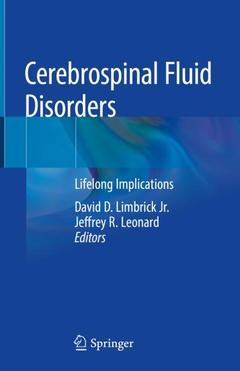Description
Cerebrospinal Fluid Disorders , 1st ed. 2019
Lifelong Implications
Coordinators: Limbrick Jr. David D., Leonard Jeffrey R.
Language: English
Subjects for Cerebrospinal Fluid Disorders :
Support: Print on demand
Description
/li>Contents
/li>Biography
/li>Comment
/li>
Hydrocephalus is one of the most common diseases of pediatric and adult neurosurgery. With the introduction of modern neurosurgical procedures, this disease has become a life-long problem. Even with optimal treatment, there is still significant morbidity and mortality along with a significant cost to the medical system. This has caused patients and their families to demand improvements in treatments and forced clinicians to evaluate their treatments in large consortiums while utilizing both genetics and technology to improve outcomes or avoid placement of shunt all together.
This text is designed to present the current treatments for hydrocephalus across the lifespan. The foundation for understanding cerebral spinal fluid (CSF) abnormalities begins with the understanding of physiology and pathogenesis of disease. These chapters are written by published experts in the field and detail the significant advances in the detection of CSF abnormalities. This section will discuss the current advances in imaging and current research in biomarkers for both pediatric and adult patients. We will then systematically discuss the treatment of both pediatric and adult CSF disorders. These will be broken down by cause, since the physiology of each can be different. We will end the book with a discussion both of the technological advances and a discussion of consortiums and how they have advanced treatment of this chronic disease.
The first resource available that compiles recent laboratory advances with current clinical treatment.
Presents the current treatments for hydrocephalus across the lifespan.
Written by experts in the field.
These books may interest you

Cerebrospinal Fluid Disorders 74.82 €



